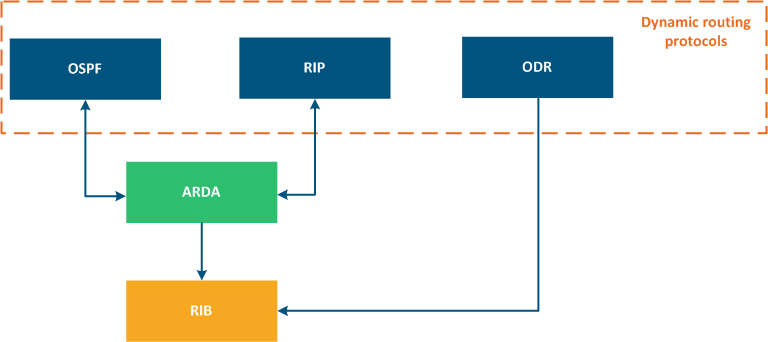| Include Page | ||||
|---|---|---|---|---|
|
| Hide_comments |
|---|
Table of
...
contents
| Table of Contents | ||
|---|---|---|
|
Dynamic routing
Static routing described at the Static routing article has a has the following critical disadvantages:
- scalability: the appearance of each adding a new router in the network requires changing the configuration of all the existing nodes;
- operation: changes in the network will require updating the routing information on all network nodes;
- rapidityspeed: devices or links failure requires device or link failures require changes to the device routing tables of the devices, which must be done performed manually.
Dynamic routing protocols are free from all the mentioned disadvantages of the static routing. Besides that, some of them have the following functionsadditional benefits:
- traffic balancing: if there are several paths for traffictowards the same destination, the router distributes balances the transmitted data between the communication channels, ensuring an even distribution of the devices and channels of the channel utilization;
- fault tolerance: automatic transition to the backup infrastructure in case of failure of the main one.
Dynamic routing protocols exchange routing information and update it automatically and, despite . Despite their basic functionality is being similar, the protocols can be classified in a the following way:
- By the application area:
- internal: dynamic routing protocols used within an autonomous system, i.e. a set of devices and communication channels under common management (for example, ODR, RIP, OSPF);
- external: dynamic routing protocols used to exchange routing information between autonomous systems (for example, BGP).
- By the operational principles:
- distance-vector: the devices exchange the routing tables, . The network nodes operate only with information about their direct directly connected neighbors and only with routing information received from them (for example RIP, ODR);
- link state: the devices exchange the whole topology tables, each . Each network node operates with information about the structure of the entire network and can reproduce the whole entire scheme (for example, OSPF).
Dynamic The dynamic routing protocols are supported by the Infinet InfiNet devices of the InfiLINK 2x2 and , InfiMAN 2x2, InfiLINK Evolution, InfiMAN Evolution families. All All further examples will be provided for the devices of these families.
A In general, a separate module in the device's architecture is responsible for the operation of each dynamic routing protocol, however, for the operation of the RIP and the OSPF modules protocols, an ARDA module has been added (см. ARDA (Aqua Router Daemon)), which performs a coordination function and integration to the to with the general system (Figure 1). OSPF The OSPF and RIP configuration is configurations are performed via ARDA.
| Center |
|---|
Figure 1 - Internal architecture of the dynamic routing modules in the InfiLINK 2x2, InfiMAN 2x2, InfiLINK Evolution, InfiMAN Evolution devices |
| Tip | ||||
|---|---|---|---|---|
| ||||
The attached documents contain a description of the dynamic routing protocols: ODR, RIP, OSPF. There are The child pages with device contain configuration examples for each protocol:
|
...
Network configuration via web interface for InfiLINK 2x2, InfiMAN 2x2.
- Network configuration via Web interface for InfiLINK Evolution, InfiMAN Evolution families devices.
- Ifconfig command (interfaces configuration)
- route command (static routes configuration)
- mint command (MINT version)
- mint command (TDMA version)
- ARDA (Aqua Router Daemon)
